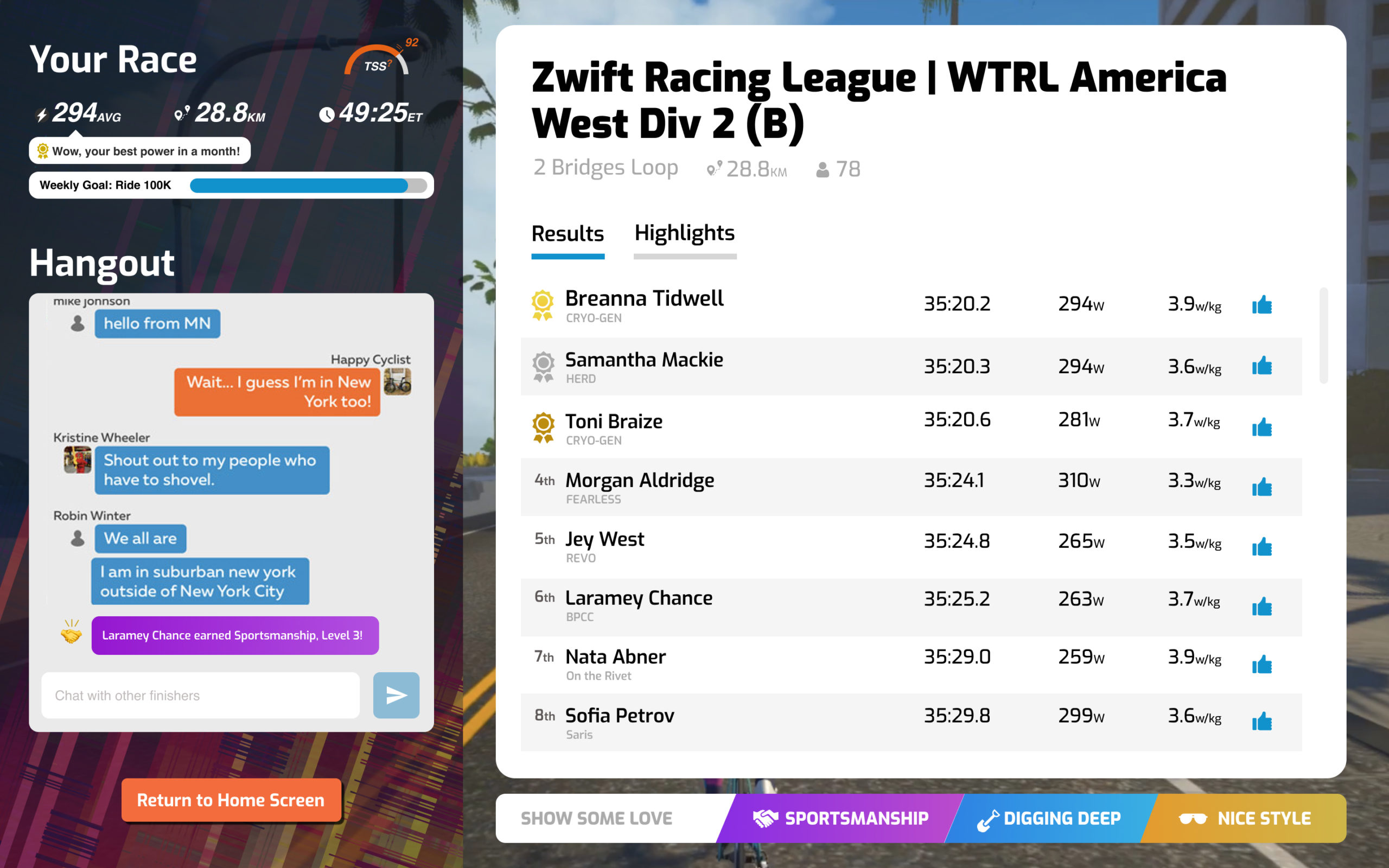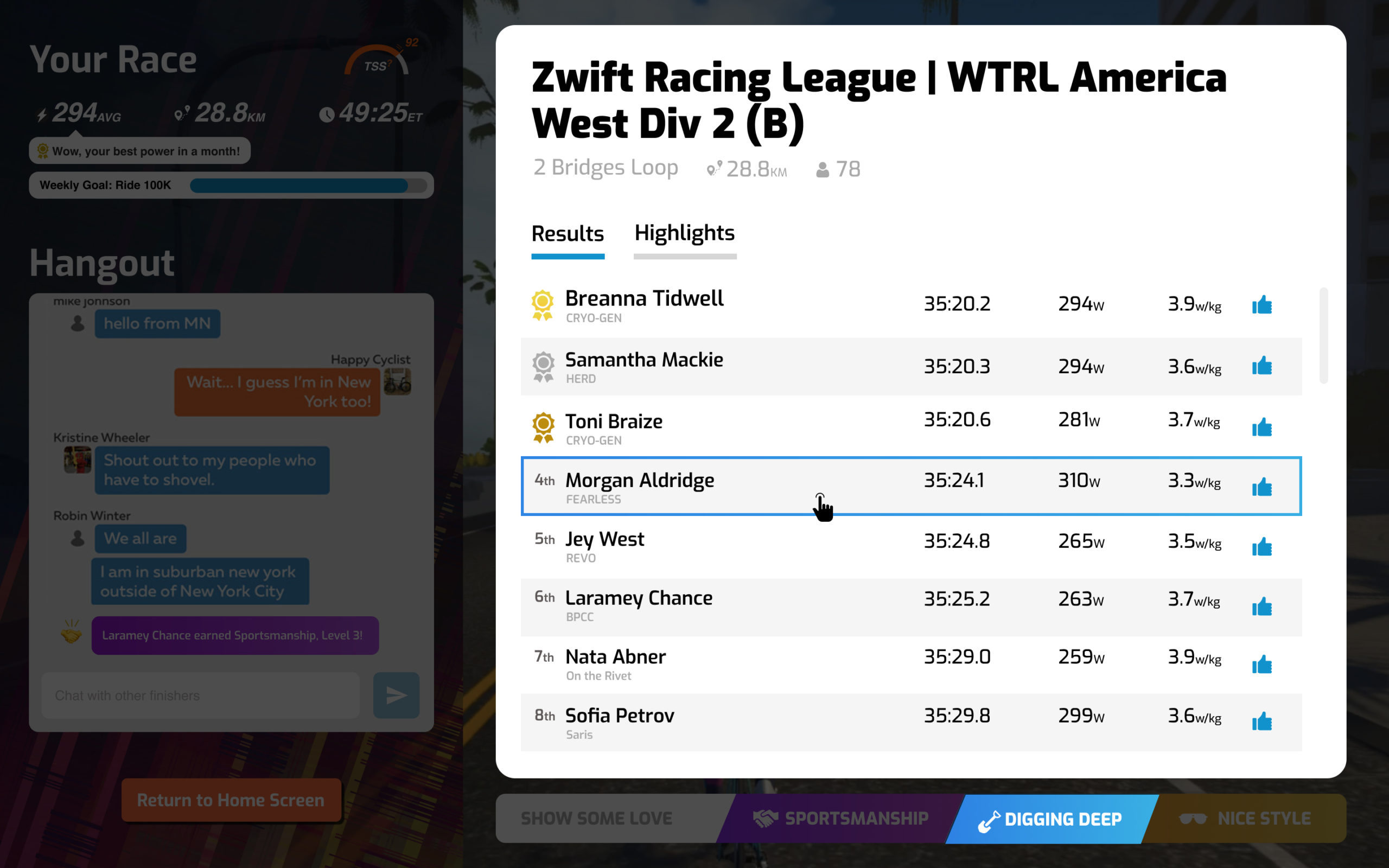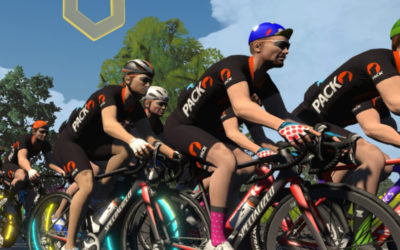All good projects start with a compelling problem statement. To aid in this, take a look at some of the contrasts between the two images below.
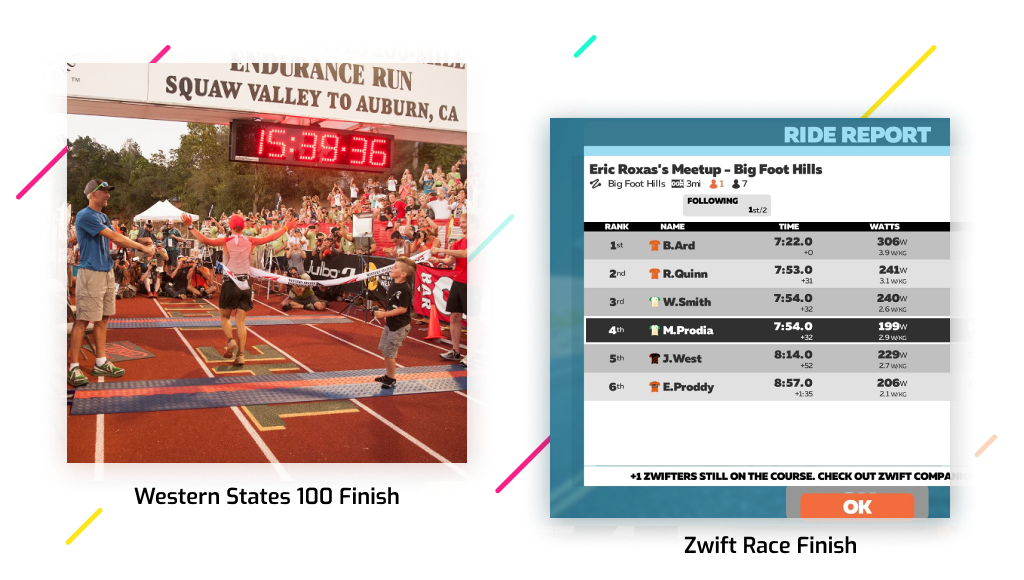
As much as I find value in the many social features Zwift offers, it’s always felt like such a huge miss when Zwift races end so abruptly. People train for days, weeks, perhaps even months for these events, just to have them dissappear in a moment.
All the goodness you experience in in-person races is missing from Zwift: the cheering, the banter, the awards, the camaraderie, and reflection.
Given this, our Problem Statement can read something like: Zwift’s post-race experience fails to capture the incredible social and celebratory moments that people experience in person, and creates an unhealthy focus on individual placement.
So what do you do with a problem? You do a bit of research with people related to the problem space (customers, product owners, competitors, etc) and create some insights that highlight the underlying trends you’re hearing and observing. Good insights will enable great ideation. Here are a few examples:
- Runners and cyclists are on a dopamine high after an event, and crave a chance to celebrate and converse about their experience with other participants.
- By overly focusing on the top 1% of runners/riders, Zwift’s post-race experience neglects the achievements and efforts of the other 99% of participants.
- Participants want to re-live the challenges they overcame during an event, and want to share those moments with others.
- Participants have no feeling of accomplishment, apart from their individual rank in the event.
Now you’ve got some material to work with! Your insights must be provocative enough to compel people to act on them. If they aren’t, no one will care about the problem. And if you’re struggling to come up with juicy insights, it could be a sign that your research wasn’t quite up to par.
Ideation
With these insights in hand, you can start ideating potential solutions. As you do this, a sense of the broader system containing these ideas should also start to emerge. You’ll want to go really broad here, and include a diverse grop of folks in order to benefit from those varied perspectives. And don’t be afraid to look to the outside for help here. Look at competitors and trends in the market. In my concepts, you’ll see ideas that derived from other places like Overwatch, chat rooms, and Formula 1 races.
Some of your early ideation and sketching might look like this:
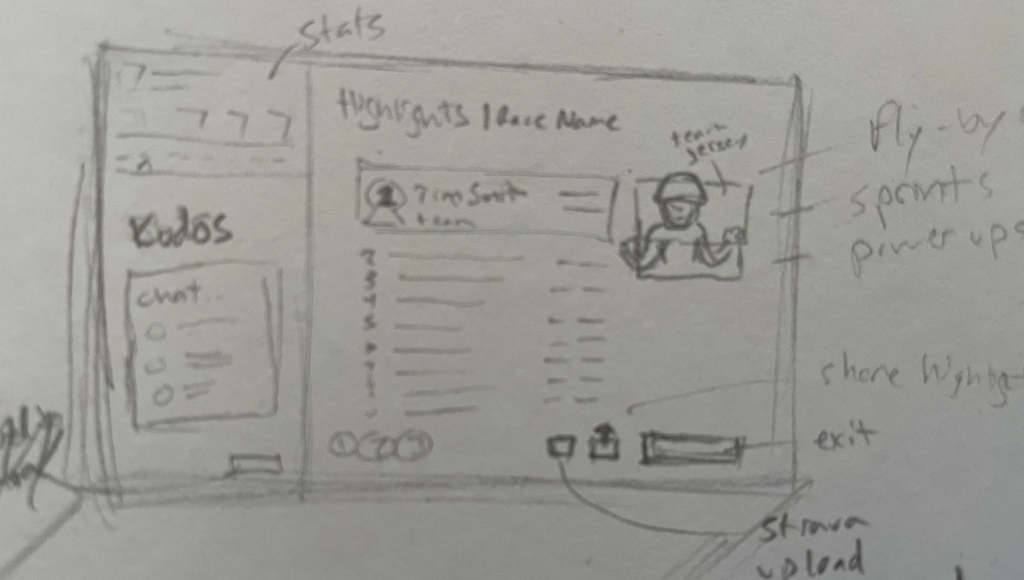
Prioritization
Assuming you’ve generated numerous potential ideas, you will need to prioritize these. A handy tool for that is a simple grid with two axis. One axis measures Impact (for your customer) from low to high and the other measures Feasibility (can we do this with our resources?) from low to high. Plot your ideas and then align and decide together which ideas you have capacity and resources to take on.
Building Context
Depending on how vague your ideas and sketches were leading up to this point, you might need to do some scenario writing, user flows, or storyboarding to think about your idea more holistically. These all get you to think more about the larger environment that your customer is dealing with, the pressures they’re facing, and the events before and after your idea that should be considered. Scenarios are essentially a script of the interactions between the customer and the system. A user flow or storyboard does this as well, but in visual form. You want to focus on the context bringing the customer to this point and the magic moment where you deliver value to them in a new and desirable way.
Remember to keep a progress over perfection mindset here, or you can get stuck on an idea forever. Get in to making some testable concepts as quickly as you reasonably can.
Value Statements
Now that your team has a strong understanding of what the idea does for the customer, you want to be able to articulate that value really clearly. Value Statements allow your entire team to communicate the value of your work in a consistent and memorable way. You can use a formula like Who + Will have the ability to do what. Here are some examples:
- Zwifters who have finished an event will have the ability to celebrate and socialize with other participants.
- Zwifters, regardless of their finishing position in an event, will have the ability to re-live their heroic moments from an event, and share those with people they care about.
- Zwifters, regardless of their performance, will have the ability to earn unique achievements and recognition.
Design Detail
With these Value Statements acting as our North Stars to root in to and hold us accountable for designing the right shape of ideas, we can begin our detailed design work. As with ideation, we still need to get this material in front of people for testing, so find the right balance of progress and polish.
In the end, this is the design I came up with. You’ll see a clear connection to the on-screen elements and the various Value Statements and Insights that I generated. That’s a good sign that you’re staying true to your customers and their needs. I hope you’ve enjoyed this!

